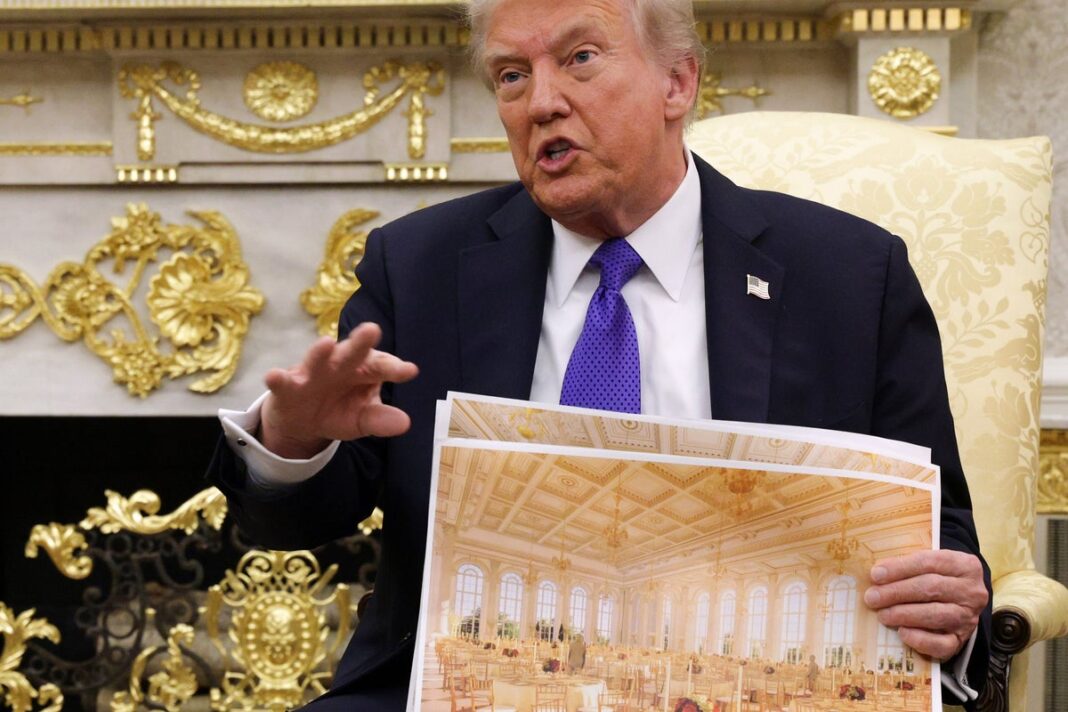The Transformative Vision of a New Ballroom at the White House
A Lavish Expansion
The landscape of the White House is set to undergo a significant transformation as plans are unveiled for a new 90,000 square-foot ballroom, aptly named “The President Donald J. Trump Ballroom.” This expansion has ignited conversations about its implications for both the historic site and the fabric of American politics.
Historical Context
To understand the magnitude of this change, it’s essential to reflect on the White House’s historical significance. The establishment has served as a presidential residence and workspace for over 200 years, holding centuries of stories, dignitaries, and decisions that shaped the nation. The East Wing, recently demolished to make room for this new ballroom, had served the public for more than a century. Its loss has provoked emotional responses from individuals, including former President Ronald Reagan’s daughter, Patti Davis, who called its demolition “heartbreaking.”
Motivations Behind the Project
According to senior Trump officials, the ballroom construction is being funded through private donations, with notable contributions from tech giants like Amazon, Apple, Google, HP, and Microsoft. This financial backing is aimed at alleviating taxpayer burdens while facilitating a grand venue for state dinners and high-profile events. Trump has indicated that the budget for the project has escalated from an initial $250 million to approximately $300 million, signaling the ambitious nature of the endeavor.
The Vision for the Future
President Trump envisions the ballroom as a venue that would not only serve ceremonial functions but also contribute to the visual and experiential grandeur of the White House. He has been vocal about his aim to enhance the historical residence without drawing from taxpayer funds, often citing this as part of a “Make America Great Again” campaign. His administration pitches the renovations as a forward-thinking initiative for future generations, claiming that such upgrades will elevate the experience of visitors and dignitaries alike.
Political Ramifications
The construction and naming of the ballroom also carry significant political undertones. Trump’s name has become synonymous with various buildings and products worldwide, further embodying his brand as a business mogul turned political figure. This new ballroom could enhance his legacy within the fabric of American history. However, critics argue that it epitomizes a personalized and political brand of governance that prioritizes spectacle over substance.
Public Reaction
As discussions about the ballroom unfold, public sentiment appears divided. Some Americans welcome the expansion, seeing it as a positive reflection of Trump’s ambitious vision, while others view it as a symbol of division and excess during a period of political strife and government shutdown. The absence of a major paywall for the news outlet covering these developments—The Independent—underscores its commitment to making information accessible to all, aiming to inform and involve readers in these pressing matters.
Construction Progress and Future Plans
As construction crews work to demolish longstanding segments of the East Wing, the future of the ballroom remains a topic of intense speculation and imagination. It’s meant to house a series of high-profile events, elevating state functions to new heights and potentially reshaping how the world perceives the American presidency.
The Broader Implications
The transformation of the White House into a highly personalized space also raises questions about historic preservation, federal funding, and the relationship between private financial influence and public governance. It opens up discussions about the balance of power, the sanctity of American institutions, and the cultural ramifications of such illustrious projects.
Conclusion
The plans for the new ballroom represent more than just a physical expansion; they signal a complex intertwining of legacy, politics, and evolving definitions of American identity under the Trump administration. As discussions evolve and construction continues, the implications of this project will reverberate across the political landscape for years to come.



